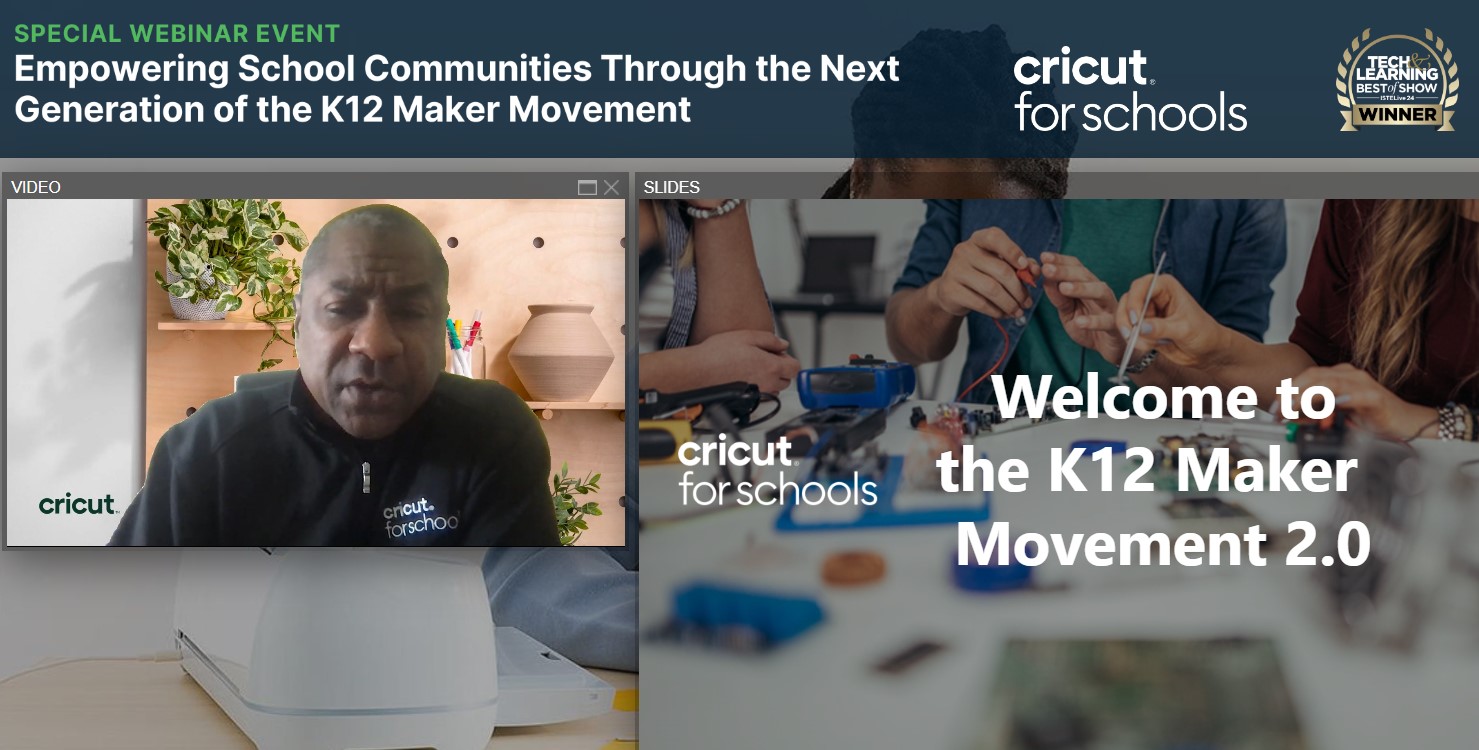Empowering School Communities Through the Next Generation of the K-12 Maker Movement
The K-12 maker movement is allowing more schools to take creativity into their own hands with dedicated creative spaces.

During a recent Tech & Learning webinar sponsored by Cricut, Vincent Young, Vice President of Marketing, explained how the maker movement has evolved over the years and where it is going into the future.
Watch the full webinar on demand here.

How the Maker Movement is Evolving
For a school, a makerspace can instill a sense of pride in both students and educators with custom-made items. Whereas creating custom items started as an at-home hobby for some (with others utilizing professional services to create custom items), Cricut has brought custom-made designs into the classroom for educational purposes.
“Right now, about a fourth of U.S. K-12 schools actually report that they have a Cricut somewhere on their campus,” says Young. “About the same number, about a fourth of all U.S. K-12 teachers say they actually have a Cricut at home. So it’s a very popular product amongst not only the school community but the educator community.”
Cricut looks to help foster the maker movement by encouraging creativity among students, teachers, administrators, parents, and anyone involved in the educational space. The main focus of the maker movement is to encourage and enhance design skills and design thinking, traits that would be highly valued in the professional world.
Over the last ten years, the movement has incorporated various technologies that cater to creative needs. Many of these forms of tech have been introduced to the educational space over time, from simple forms of tech to advanced 3D printers.
Cost and Relevance
The K-12 maker movement helps to create dedicated school spaces to help foster design-thinking, hands-on learning, and the development of vocational skills. Two of the factors that have influenced the movement for many schools revolved around cost and relevance.
Tools and ideas to transform education. Sign up below.
“Despite the popularity of many of these technologies, cost is still a barrier,” says Young. “The second one has to do with relevance. When we think about the range of things that can be fabricated, it’s not relevant to a full range of educators and students from K all the way through 12. It’s also not relevant across a full range of school subjects. So a lot of the K-12 maker movement technology has been relegated to high schools in maker or engineering curriculum.”
What Does the Future of the K-12 Maker Movement Look Like?
Young points out how the future of the K-12 maker movement involves more creativity from the user while also building on what was already established in makerspaces.
“It’s really about bringing humanity into the next iteration of technology,” he said. “When we think about the next generation of the K-12 maker movement, it’s about building on the things that were great within the last ten years. It was centered around the object, the fabrication of a thing. It’s building on that but making it a little more human.”
Bringing more user interaction into the K-12 maker movement is the focus of Cricut, giving more freedom to the students and helping them feel more connected with the things they make. In the past, few individuals knew how to operate the technology used to create particular items. Cricut wants to broaden the amount of people who have access to and know how to use such devices to express their creativity.

Michael Millington is a senior staff writer for Tech & Learning. A writer and editor with over a decade of experience, his focus on bringing actionable information to those in need is the driving force behind his work. When not researching new advancements in technology, Michael likes to practice his Italian and train his dog Cyril.
